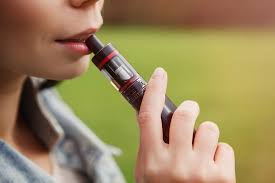Sheffield: The proportion of young people who vape has grown significantly over the last year.
According to charity Action on Smoking and Health, the proportion of young people aged 11 to 17 in Great Britain who have experimented with vaping has risen from 15.8 per cent in 2022 to 20.5 per cent in 2023.
Vapes often come in gratifying and seemingly innocuous flavours, such as bubblegum, candy floss and sherbet, and in colourful and enticing packaging that is likely to appeal to younger consumers.
What’s more, young people may see vaping as a safe alternative to smoking. A 2015 review from Public Health England stated that e-cigarettes were “95 per cent safer” than cigarettes. This messaging was meant for adults addicted to cigarettes – but it has led to the perception that vaping is not harmful.
Nevertheless, vapes can contain potentially harmful and addictive substances, such as nicotine and flavourings linked to lung disease.
In response, the government has announced several measures which aim to stop vaping appealing to younger consumers. This includes a ban on the sale of disposable vapes, restrictions on appealing vape flavours, introducing plainer packaging and tighter restrictions on how retailers display vapes.
This a start, but more needs to be done. A public health awareness campaign that speaks directly to young people who are currently vaping or more susceptible to vaping and seeks to make it seem cringe, not cool, could help to break the connection between vaping and social approval.
Why teens vape
The popularity of vaping may be linked to peer pressure – young people might start vaping to fit in or to impress their peers by experimenting with new things.
Young people are at a critical age where they are learning to assert their independence, and place more value on the approval and support of their peers than their parents.
Teenagers’ brains are more sensitive to the feelings and excitement derived from taking risks than adults’ brains are.
When young people think their peers are observing them, they are more likely to take risks – the reward response is amplified. This has been linked with teenagers being more predisposed to risky health behaviour, like vaping.
There are huge numbers of posts on social media platforms that position vaping as exciting and fun to teenagers.
Popular and trending hashtags include #vapetrick, #vapefam and #vapelife. These serve to create connections and draw teenagers into a community, feeding into their need for social approval among their peers.
To make vaping cringe among young people they need to see it as embarrassing, disgusting and culturally unacceptable – as young people are concerned with how others judge them.
Role models who focus on the negative social consequences of vaping are likely be more effective in motivating young people to see vaping as cringe.
Break the connection with cool
One way to break the connection with social approval, in a way that would chime with young people, would be to to involve social media influencers. Influencers carry significant credibility with teenagers, acting as trendsetters and affecting social norms.
How vaping is depicted in films and across media platforms, such as online video channels, also requires careful monitoring. Limiting depictions of vaping and where it is present, presenting it as undesirable behaviour rather than as cool, may go some way to limit young people wanting to vape.
Stronger regulation of vaping content on social media platforms popular with younger people is essential, such as monitoring the use of popular hashtags.
Some platforms have started to do this. TikTok displays a warning message stating “Be informed and aware” with a link to more information on substance support when anyone searches for vaping content.
Education programmes typically focus on teaching young people how to critically evaluate information they encounter online, not how social media algorithms affect the content pushed towards them.
School education programmes should openly discuss the potential harmful impact algorithms can have on their consumption experiences.
Another measure to implement would be to raise the price of vapes. This has had a significant impact on reducing the rate of young people smoking: they are likely to be more sensitive to changes in price than adults. A planned tax increase from the government on vaping in the 2024 budget could have a positive effect here.
But care also needs to be taken in limiting teenagers’ access to vaping products. When supply of the energy drink Prime – a product also popular among younger consumers – was limited, this led to a black market emerging.
Young people went to great lengths to acquire the product as a status symbol to gain social approval. Making vapes difficult to acquire could lead to young people vaping to gain kudos among their peers.
By Emily Moorlock, Sheffield Hallam University
The Conversation
